Over 42% of consumers say they still prefer resolving complex or urgent issues through a phone call rather than digital channels. Despite the explosion of messaging, live chat, and AI-powered assistants, the voice channel continues to dominate in moments that matter, especially when the stakes are high or time is tight.
For businesses, this creates a sharp contrast: while customer expectations have shifted toward instant, on-demand help, the most trusted method of communication remains the one that’s been around for decades. Toll-free numbers sit right at the intersection of accessibility, professionalism, and trust, and they still outperform newer solutions when clarity, speed, and direct human connection are required.
But who’s using toll-free numbers today, and why have they not faded into obscurity? From global banks to solo consultants, toll-free communication has quietly evolved into a strategic tool across nearly every industry. It’s not just about picking up the phone anymore, it’s about routing calls smartly, integrating with digital tools, and creating seamless experiences across borders and time zones.
In the sections below, we’ll break down exactly what makes toll-free numbers valuable in the modern communication stack, how different industries rely on them for distinct outcomes, and what features matter most as we move further into a digital-first future.
Let’s start by understanding why toll-free numbers haven’t disappeared, and why, in some cases, they’re more important than ever.
Key Takeaways
- Despite digital growth, 42% of consumers still prefer voice when resolving urgent or complex issues, making toll-free numbers a critical trust-building channel.
- Toll-free numbers enhance brand perception, reduce call friction, and support scalable, centralized communication across industries like finance, healthcare, eCommerce, and SaaS.
- Modern systems now offer smart routing (by time, region, and topic), deep CRM integration, and advanced analytics, making toll-free not just accessible, but strategically intelligent.
- Global businesses benefit from multilingual toll-free routing and localized infrastructure, though they must navigate regulatory differences and mobile access restrictions.
- Toll-free isn’t outdated, it’s evolved into a flexible, cloud-powered, and high-trust touchpoint that outperforms chat and email in high-stakes moments.
What Makes Toll-Free Numbers Strategically Valuable Today?
Toll-free numbers haven’t just survived the shift to digital, they’ve adapted and earned their place alongside modern customer engagement tools. The reason they continue to hold strategic weight comes down to two things: how people instinctively react to urgent situations, and how businesses shape perception through communication channels.
Relevance in the Era of Omnichannel Communication
When urgency hits, people still reach for the phone. According to a 2023 Salesforce State of Service report, 59% of customers say they prefer voice calls for resolving urgent issues, even when live chat or email is available. It’s the speed, clarity, and directness of a conversation that digital tools often can’t replicate.
More importantly, voice is still seen as the most trustworthy channel. A Forrester study found that customers associate phone support with higher accountability, especially in industries like healthcare, finance, and insurance. When something goes wrong, a credit card is lost, a flight is canceled, a delivery is missing, people default to calling because it feels personal, fast, and reliable.
Toll-free numbers don’t just keep this trust intact, they remove the friction that might stop someone from calling in the first place. No cost to the caller means one less hesitation during critical moments.
Branding, Reach, and Cost Efficiency
For businesses, a toll-free number doesn’t just improve access, it shapes perception. A dedicated 800 or 888 number sends a strong message: we’re available, we’re professional, and we’re built to serve at scale. This perception is especially powerful for small businesses or remote-first teams. A freelance legal consultant or a Shopify store with a toll-free number instantly feels more legitimate than one relying solely on a generic Gmail address and a personal mobile line.
There’s also a functional advantage: toll-free numbers simplify nationwide and even global communication, removing geographic constraints from customer engagement. A single number can serve a multi-state or cross-border audience without confusing customers with area codes or long-distance charges.
Cost-wise, VoIP-powered toll-free solutions have made this kind of reach incredibly affordable. Instead of maintaining multiple local numbers or building out physical infrastructure, companies can route calls dynamically through a single, centralized line,without compromising the customer experience.
Industry Use Cases: Who Actually Uses Toll-Free Numbers?
The versatility of toll-free numbers becomes even clearer when looking at how different industries use them to solve very specific challenges. From increasing sales to providing critical access to services, each sector applies toll-free functionality in a way that reflects its business model, customer behavior, and operational structure.
E-commerce & Retail
Online sellers and brick-and-mortar retailers rely on toll-free numbers for one key reason: removing purchase hesitation. Whether it’s about checking delivery status, returning an item, or asking pre-sale questions, customers expect quick answers. If a phone number isn’t easy to find, or if it looks like it might come with long-distance charges, many will simply abandon the transaction.
Adobe Commerce reports that 38% of customers are likely to leave a purchase if they can’t find fast, human support during the checkout process. A toll-free line signals that support is always available and free to access, which can directly reduce cart abandonment and increase conversion rates.
Retailers often route calls through centralized contact centers, allowing them to manage sales support, post-purchase inquiries, and return logistics at scale, without needing physical staff in every store location.
Financial Institutions
For banks, credit unions, and insurance companies, phone access isn’t just helpful, it’s a legal and operational necessity. Toll-free numbers appear on the backs of credit and debit cards for lost card reporting and fraud alerts. They also connect customers with live agents for tasks like loan applications, policy questions, or emergency funds access.
These numbers serve a dual purpose: providing fast access during sensitive moments, and complying with regulatory expectations around customer service transparency. Encrypted VoIP infrastructure combined with advanced routing helps financial institutions meet security standards without sacrificing call quality or speed.
The always-available nature of toll-free hotlines is a trust anchor in this industry. It tells customers they can reach real help, instantly, no matter where they are.
Healthcare and Insurance Providers
In the healthcare space, accessibility can’t be optional. Toll-free lines support everything from appointment scheduling and prescription refills to insurance eligibility checks and nurse hotlines.
Elderly patients and individuals without reliable internet often prefer, or need, voice-based support. A direct, cost-free phone number removes that barrier entirely, allowing people to access care or coverage info without relying on apps or online portals.
Many providers use 24/7 toll-free systems to triage incoming calls through IVR or route them to nurses for non-emergency advice. In rural areas, toll-free phone lines often serve as the first point of contact for navigating complex care systems.
Travel, Logistics, and Hospitality
Travel disruptions require fast fixes. Whether someone needs to rebook a missed flight, cancel a hotel reservation, or get help during a weather delay, phone support is often the only reliable channel when time is tight.
Toll-free numbers provide a centralized, scalable solution for travel brands. Airline reservation systems, for example, use toll-free lines with intelligent routing based on location and loyalty tier. Hotels often handle group bookings, loyalty inquiries, and special requests through national or regional toll-free desks.
Car rental agencies and delivery logistics companies also use toll-free lines to manage last-minute changes, helping reduce lost bookings and increase customer satisfaction when itineraries shift.
Technology and SaaS
Software companies deal with a high volume of technical questions, from password resets to configuration help to advanced product support. A tiered toll-free system allows them to serve both self-serve users and enterprise clients efficiently.
Integrated with IVR and CRM tools, toll-free support centers can verify accounts, surface previous issues, and escalate calls to product specialists without asking users to repeat themselves.
It’s not just about solving problems, it’s about reducing churn. Gartner reports that 52% of customers will stop using a product after a single unresolved issue. Quick access to real support via toll-free can be the difference between retention and revenue loss.
Government Services and Non-Profits
Toll-free communication is often the backbone of public access. Government agencies rely on them for everything from disaster relief coordination to tax advice hotlines.
After major hurricanes in the U.S., FEMA often activates temporary toll-free numbers to manage claims and direct displaced residents to assistance. On the mental health side, the 988 Suicide & Crisis Lifeline connects people in emotional distress to trained counselors, all via toll-free access.
Non-profits use toll-free numbers to receive donations during fundraising campaigns, offer support through crisis hotlines, and coordinate volunteer efforts. For many of the populations they serve, cost-free phone access may be the only viable communication channel.
Remote Professionals and Solopreneurs
Freelancers, consultants, and remote-first workers increasingly use toll-free numbers to separate personal identity from professional presence. Instead of handing out a mobile number to every client or prospect, they set up a toll-free line that forwards wherever they need, desk, mobile, or voicemail.
Vanity numbers, auto-attendants, and voicemail routing help even solo operators present a polished, structured business experience. This kind of infrastructure makes a one-person consulting business look more like a five-person agency, a shift that often translates into higher rates and client trust.
How Toll-Free Numbers Are Evolving: Features That Matter in 2025
Toll-free numbers aren’t just legacy infrastructure dressed up with new pricing. They’ve quietly evolved into sophisticated communication systems that rival, and often outperform, more hyped digital tools. For businesses weighing whether toll-free is still worth it, the real value lies in the feature set: automation, customization, and data-driven control that were unthinkable even five years ago.
Smart Call Routing and Localization
Legacy toll-free systems treated every incoming call the same. Modern systems don’t. Calls can now be routed dynamically based on time of day, caller location, or even the caller’s intent, dramatically improving speed to resolution and first-call success rates.
Here’s how it works in practice:
- Time-based routing: Calls after hours can automatically redirect to voicemail, an answering service, or an alternate timezone-based team.
- Geo-routing: A caller in Madrid reaches the local Spanish-speaking team, while someone from Toronto connects with the Canadian office, even if both dial the same toll-free number.
- Skills-based routing: Inquiries tagged as billing, tech support, or sales are intelligently routed to the most qualified available agents based on real-time capacity.
This kind of routing architecture helps reduce wait times, minimize handoffs, and keep staffing lean, especially in contact centers spanning multiple countries or departments.
Integration with Digital Tools
Modern toll-free services now live inside the same tech stacks as the rest of the customer journey. They sync with IVR platforms, CRM systems, analytics dashboards, and even mobile apps, turning a simple phone number into a fully integrated support node.
Here’s what that looks like:
- IVR systems pre-screen callers with natural language prompts before routing them to a human.
- CRMs like Salesforce and HubSpot surface caller details as the phone rings, giving agents real-time context.
- Click-to-call tools built into mobile apps or websites initiate toll-free calls with one tap, no number dialing required.
- Text messaging via toll-free lets companies use a single number for both voice and SMS communication, streamlining everything from appointment reminders to delivery updates.
Popular platforms that support toll-free integration include Zendesk, Voiso, and Zoho, among others. This level of interoperability makes toll-free numbers far more than static contact points, they become dynamic parts of the customer experience.
Real-Time Analytics and SLA Monitoring
Old-school toll-free lines offered little more than call duration and timestamp. Today, they provide enterprise-grade visibility into every call event, the kind of insight necessary to track SLA compliance, improve staffing, and measure campaign performance.
Metrics now available include:
- Peak call times by hour, day, or geography
- Call origin heatmaps showing where inquiries are coming from
- First-call resolution rates
- Agent performance stats tied to call handling time or escalation rates
- Voicemail vs. live answer ratios
For businesses managing inbound support queues, this data is essential. It allows teams to make proactive staffing decisions, test new routing logic, and identify where customers are getting stuck. When tied to quality assurance tools like call recording and transcription, it becomes a feedback loop that sharpens the entire service operation.
International Use of Toll-Free Numbers: What Global Businesses Must Know
Toll-free communication becomes significantly more complex once you operate across borders. A number that works perfectly in one country might not even connect in another — or worse, it might result in unexpected charges for the caller. Businesses serving multinational audiences need to understand the nuances behind international toll-free services if they want to deliver a consistent experience globally.
Cross-Border Accessibility and Localization
There’s no such thing as a single global toll-free number that just works everywhere, but the closest thing is the UIFN, or Universal International Freephone Number. Issued by the ITU (International Telecommunication Union), UIFNs allow companies to use a unified toll-free number across multiple countries that support the format. Still, each country must be individually activated, and adoption varies, making them useful but not comprehensive.
In most cases, companies rely on country-specific toll-free codes, like:
- 800 for the U.S. and Canada
- 0800 for the UK and parts of Europe
- 1800 or 1300 formats for Australia and New Zealand
- 800/400 series in China, depending on landline vs. mobile origin
To ensure consistent support quality, global organizations often build multilingual call centers that route traffic based on both language and geography. For instance, a French-speaking customer in Canada might automatically be routed to a Montreal team, while a Spanish-speaking caller from Chile hits a LATAM hub in Bogotá, even though they’re dialing the same toll-free number on the website.
This kind of localization strategy builds trust, improves first-call resolution, and avoids frustrating misroutes, especially in regions where accents, dialects, and cultural norms affect service expectations.
Regulatory Differences by Country
Toll-free doesn’t always mean free, especially when mobile phones are involved. In the U.S., for example, true toll-free means the business pays for every inbound minute, regardless of the caller’s location or device. But in many parts of the EU and APAC regions, mobile-originated toll-free calls can incur charges for the caller, depending on their carrier and local regulations.
Other variations include:
- Prefix formats: Some countries use multiple toll-free prefixes depending on use case (e.g., 800 vs. 801).
- Billing models: Countries like Japan and Germany support “shared-cost” numbers, which aren’t truly toll-free.
- Connection restrictions: Certain regions restrict toll-free access from mobile phones or VOIP networks unless specific setup steps are followed.
For global brands, ignoring these distinctions can backfire, leading to angry customers, lost calls, and service that appears broken even though the infrastructure is functioning properly.
Planning for global toll-free access requires coordination across legal, telecom, and localization teams. Providers like DIDlogic that specialize in multi-country deployments often help businesses navigate this complexity with pre-vetted routes and regulatory expertise.
How to Choose a Toll-Free Solution That Aligns with Your Goals
The value of a toll-free number isn’t in the number itself — it’s in how well the infrastructure behind it aligns with your business model, scale, and customer expectations. Choosing a provider is less about cost per minute and more about whether the system can adapt as your needs evolve.
Criteria to Evaluate a Toll-Free Provider
Before signing up for any toll-free service, companies should assess five key areas:
- Call Volume Needs: Some providers throttle or cap call volumes on basic plans. If your business expects high concurrent calls, especially during campaigns or product launches, make sure the platform can scale without degradation.
- Custom Routing Requirements: If your use case involves multiple departments, regions, or languages, your provider must support time-based, geo-based, and skill-based routing. Static forwarding isn’t enough.
- Integration Capabilities: A modern toll-free setup should plug into your existing tools, CRM, helpdesk, analytics, and IVR. Without those integrations, agents lose context, and reporting becomes fragmented.
- Reporting Granularity: Basic call logs won’t cut it. Look for platforms that provide detailed metrics: call origin by region, answer speed, abandonment rates, and routing outcomes. These numbers feed operational improvements.
- SLA / Uptime Guarantees: Downtime costs more than money. Make sure the provider offers service-level agreements that reflect your business-critical availability needs, especially if you run 24/7 support or operate internationally.
Providers vary wildly in how much control and transparency they offer. The right fit is one that treats your toll-free number as a living part of your customer infrastructure, not a static line.
Why DIDlogic?
DIDlogic specializes in advanced, global voice infrastructure that’s built for scale, flexibility, and regulatory clarity. Unlike legacy telcos that rely on patchwork routing, DIDlogic operates its own backbone, delivering low-latency VoIP across 60+ countries with guaranteed uptime SLAs.
What sets DIDlogic apart:
- Dynamic routing logic with granular controls (time, region, topic)
- International reach with pre-configured toll-free options in complex markets like Japan, Germany, and the Middle East
- Transparent reporting with per-route diagnostics and API access
- Deep regulatory insight, ensuring compliance with mobile access rules and cross-border restrictions
Common Myths About Toll-Free Numbers — Debunked
Toll-free numbers carry a lot of outdated baggage. Many businesses hesitate to adopt them because of persistent misconceptions, assumptions that don’t reflect how these systems actually work today. Let’s clear them up.
“Toll-free is only for big enterprises.”
That might’ve been true 15 years ago when launching a toll-free number meant paper contracts, on-premise PBXs, and long-term carrier agreements. Now, cloud-based platforms like DIDlogic make it possible for freelancers, startups, and even side hustles to launch a toll-free line in under a day, with full routing and reporting.
Solo consultants use toll-free numbers to separate personal and business communication. Online stores use them to build trust with first-time shoppers. None of them need a call center to justify the setup.
“Everyone uses live chat now.”
Live chat is fast, until the issue gets complicated. A 2024 Zendesk benchmark report found that 57% of consumers still prefer voice for resolving complex problems, especially when money, health, or travel is involved.
Chatbots and email are great for convenience. But when urgency hits, your account is locked, your flight’s canceled, your prescription didn’t arrive, people still pick up the phone.
“They’re expensive.”
They used to be. Not anymore.
Modern toll-free systems run over VoIP, eliminating most of the costs tied to legacy telecom infrastructure. You don’t need a hardware phone system, a multi-year contract, or even a physical office. You pay for what you use, and most cloud providers offer flexible pricing tiers that scale with call volume.
Many businesses today spend less on toll-free communication than on live chat software licenses, and gain far more control over the experience.
Final Takeaway: Should You Still Use a Toll-Free Number?
Toll-free numbers are no longer just a legacy tool from the landline era. They’ve become part of the modern voice stack, flexible, data-rich, and customizable to the way businesses actually operate today.
For customer-facing companies, especially those handling sensitive, urgent, or high-value interactions, toll-free access isn’t just useful, it’s often the only channel customers fully trust. The numbers aren’t going away. They’ve just changed shape.
Whether you’re building out a multi-language support team or just need a more professional point of contact, a toll-free solution remains one of the lowest-cost, highest-trust ways to stay reachable.
Quick Self-Assessment Checklist
If you’re deciding whether a toll-free number makes sense for your organization, ask yourself:
- Do you handle high-touch or urgent support?
- Do you want to expand nationally or internationally without confusing area codes?
- Is your brand perceived as small or inaccessible?
- Do you need detailed call metrics or CRM sync for service optimization?
If the answer to any of these is yes, then a toll-free number isn’t just relevant, it’s strategic.


